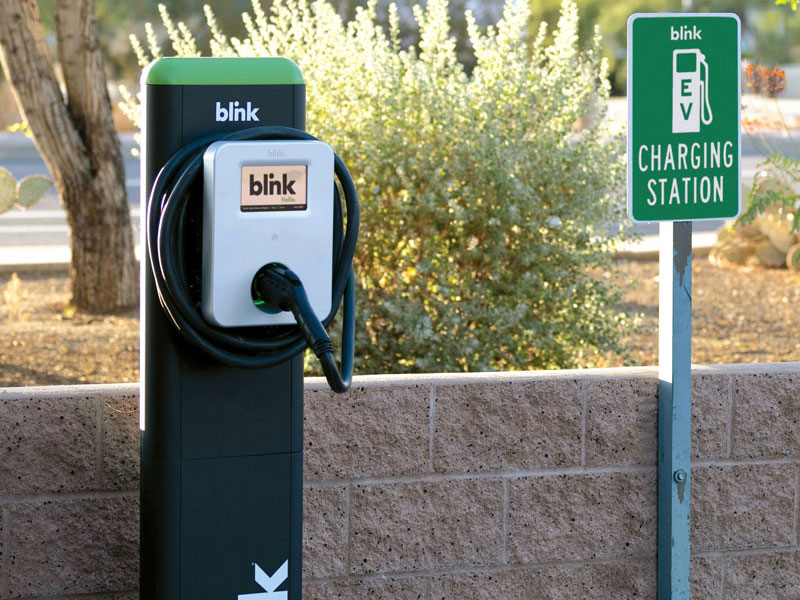
CCED Effort will bring EV Charing Stations to Five Clayton County Communities in 2021!
*This story was reprinted with the permission of Clayton County Register- North Iowa Times Editor, Audrey Posten.
 Electric vehicle (EV) charging stations will be installed in public spaces in five Clayton County communities this spring through an effort spearheaded by the Clayton County Energy District (CCED). The project aims to reverse the county’s identity as a charging station desert, attracting tourists with electric vehicles to local destinations.
Electric vehicle (EV) charging stations will be installed in public spaces in five Clayton County communities this spring through an effort spearheaded by the Clayton County Energy District (CCED). The project aims to reverse the county’s identity as a charging station desert, attracting tourists with electric vehicles to local destinations.
Through a concept of “green meets green,” CCED aims to positively affect the local economy by reducing energy costs, while also protecting the environment. One of the major sectors that affects clean energy transition is transportation and, during its January 2020 meeting, program manager Joleen Jansen said the CCED Board pinpointed electric vehicles as one of its priorities.
“First of all, we know EVs are on the road and will be on the road,” Jansen said at a recent CCED virtual lunch and learn.
She cited statistics from AutoNews.com which claimed, by 2025, EVs will account for about one-third of all global auto sales. By 2030, more electric vehicles are projected to be sold than traditional internal combustion engine (gas or fossil fuel burning) vehicles.
“Just last month, Car and Driver put out a report covering the fact that General Motors is going to accelerate their electrification fleet timeline by including 30 electric vehicles for sale by 2025. They’re going to invest $7 billion into that effort,” Jansen said. “There is no doubt that we will be seeing more, and not less, electric vehicles on the road.”
What are the advantages of owning and operating electric vehicles? According to data from the U.S. Department of Energy, they’re more energy efficient, converting about 77 percent of the electric energy they take from the grid to power the wheels of the vehicle, while conventional gasoline or internal combustion engines convert just 12 to 30 percent.
Electric vehicles are also environmentally friendly.
“There are no tail pipe emissions, period, and they run on batteries,” noted Jansen. “Over 10 years of operation, a fossil fuel burning car will emit about 33 more tons of carbon dioxide than an average EV.”
Jansen, who’s an EV owner herself, added that the cars have silent motors, operate smoothly and have strong acceleration. They require less maintenance, with no need for oil changes or transmission replacements.
There are some disadvantages, however.
“There is a thing called range anxiety,” Jansen detailed. “An electric vehicle, at max, can get 300 miles to a full charge. Then, when it’s time to charge a vehicle, it can take an hour or even all day.”
A trip from Elkader to Cedar Falls to see her kids, for example, would take more than one charge.
“So we need a place to charge when we get there. If there’s not one, we’re not going—or we’re going to take a different vehicle,” she said.
Other electric vehicle owners plan much the same way when traveling, consulting apps to see if, or where, they will be able to charge up.
Situated in the Driftless Area, Clayton County sees its share of tourists. In 2019, an organization called Arrivalist clocked nearly 206,000 arrivals to the county and, according to Clayton County’s Economic Development Office, there were more than 10,000 requests for tourist information between July 2019 and July 2020. But it currently lacks adequate charging infrastructure, a deterrent for potential EV travelers.
“The closest charging station right now to the public is located at Brown’s Sales and Leasing, in Elkader, and it’s located in between the two service bays—not a particularly glamorous spot or particularly accessible. Then there are some other chargers outside Clayton County,” said Jansen. “We thought there was a window to go through to solve that problem.”
This spring, Clayton County will be an EV charging desert no more, with the installation of dual port, level 2 pedestal chargers in Elkader, Guttenberg, Marquette, McGregor and Strawberry Point—the five communities who agreed to partner with CCED on the project. The charging stations will come from the company Blink.
Jansen said each charger will have up to 19.2 kilowatts of charging output and the capability to charge up to 80 miles per hour.
“Currently, there aren’t a lot of EV vehicles on the market that would accept that fast of a charge, but these dual port charging stations would have that capacity,” she explained.
A dual port charger means two cars could re-power at the same time.
The EV charging station project cost about $67,000, funded in large part by a $51,075 grant from the Upper Mississippi Gaming Corporation. According to Jansen, each station is about $8,300.
The cities who partnered with CCED will provide a location for the charger, as well as the electricity. Per Alliant Energy, average power costs to run a charging station are $1,000 to $2,000 per year.
“They do need to have wi-fi access to the station so people can interact and pay for the power they use as an EV owner. [The cities] will create accounts with Blink charging network and work out the system they’d like to use to sell the power,” Jansen said. “Some of them are just talking about giving away the electricity and having it be an amenity of visiting their town. Others are talking about using it as a revenue generator.”
Each of the five charging stations will be strategically located near a power source, as well as within walking distance of downtown districts. Strawberry Point’s charger will be on Commercial Street, just to the north of city hall, while Elkader’s will be found in the city lot in front of FreedomBank, next to Wilke’s and Founders Park. In Guttenberg, the station will be near the municipal building, and, in McGregor, visitors will stop at the First Street parking lot next to McGregor Municipal Utilities. Finally, the Marquette charger will be located in the Edgar Street parking lot next to Casey’s and the city park.
“As I mentioned,” noted Jansen, “one of the disadvantages of an electric vehicle, but may be an advantage for tourism, is that it takes a little bit of time to get your car charged.”
While waiting for up to several hours for their vehicles to charge, visitors will be able to enjoy the towns by shopping, dining and engaging in entertainment and recreational activities.
Upon installation, Clayton County’s EV charging stations will be automatically added to maps and apps, making them easily discoverable for EV owners, Jansen said.
“So, people who were thinking about coming up to northeast Iowa and thinking there’s a desert of chargers, now, with these stations, we will be on the maps and very visible,” she added. “There will be lots of reasons for EV owners to consider coming to Clayton County.”
By Audrey Posten, Times-Register Editor

 Previous Post
Previous Post Next Post
Next Post